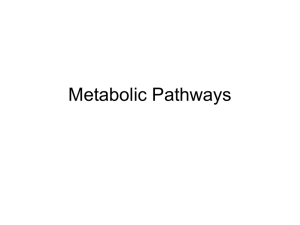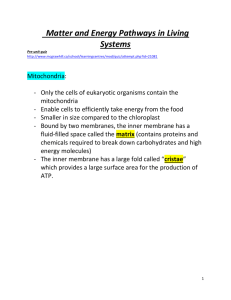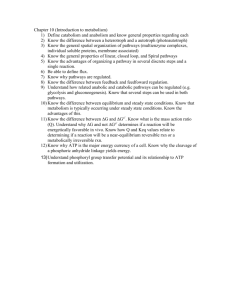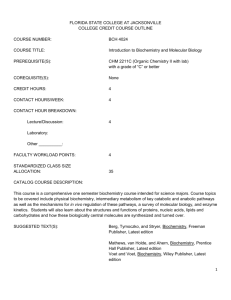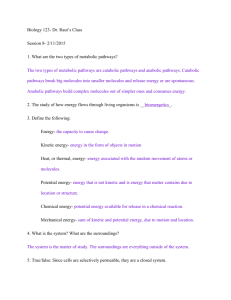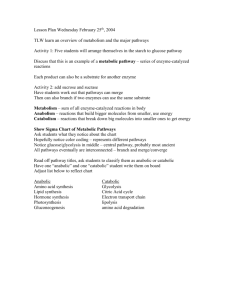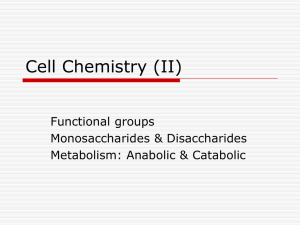Metabolic Pathways Cell Metabolism
advertisement
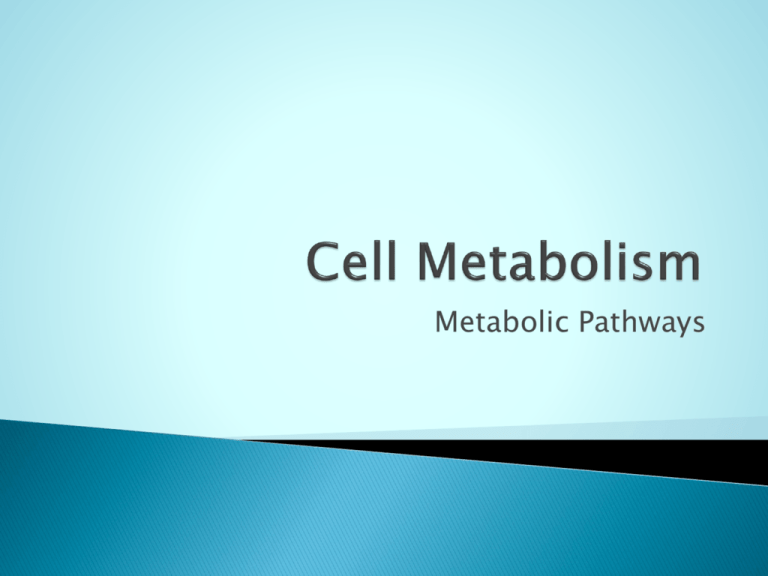
Metabolic Pathways What you should learn: The difference between Anabolic and Catabolic metabolic pathways, and give examples of each. The importance of reversible, irreversible and alternative pathways in the control of metabolism. The key role played by specific enzymes in regulating rates of reactions. Cell Metabolism is defined as : The product of all the biochemical reactions which take place in a living cell. Cell metabolism involves a network of interconnected and integrated chemical pathways catalysed by enzymes. Link to youtube lesson on metabolism http://www.youtube.com/watch?v=iIW5SPY-vwI Metabolic pathways fall into two categories: Catabolic pathways lead to the breakdown of complex molecules into simpler ones, usually with the release of energy. E.g aerobic respiration. Anabolic pathways lead to the (bio)synthesis of more complex molecules from simpler ones (building blocks) – requires energy. E.g. protein synthesis e.g. Amino Acids Carbon Dioxide ATP + Water ENERGY TRANSFER Catabolic – Aerobic Respiration Glucose Anabolic – e.g. Protein synthesis Energy + Oxygen Respiration Catabolic Energy Energy Energy ADP Protein molecule + Pi Protein Synthesis Anabolic Another example: glucose-1-phosphate phosphorylase starch This reaction requires the input of energy to proceed (anabolic reaction). Another example: starch amylase maltose This reaction releases energy (catabolic reaction). Metabolic pathways can have reversible and irreversible steps. AND Alternative pathways may exist that can bypass steps in a pathway. Example of reversible/ irreversible pathways Example of alternative routes in metabolism
